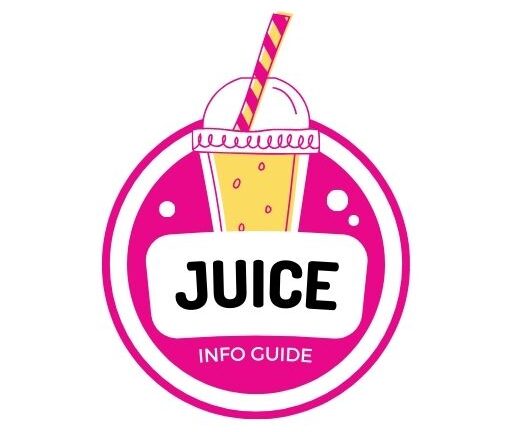When your blood sugar dips too low, it can feel like an emergency. Shakiness, dizziness, and fatigue are just some of the symptoms of hypoglycemia (low blood sugar) that require immediate attention. But did you know that a simple glass of orange juice could be your lifesaver in such moments? Let’s dive into why orange juice is a go-to remedy for low blood sugar and how much you should consume to bring your levels back to normal.
Why Orange Juice Is Perfect for Low Blood Sugar
Orange juice is a natural source of simple carbohydrates, specifically fructose and glucose, which are quickly absorbed by the body. These sugars provide an almost instant boost to blood sugar levels, making orange juice an excellent choice for treating hypoglycemia. Unlike sugary sodas or candy, 100% orange juice also contains essential nutrients like vitamin C, potassium, and flavonoids, making it a healthier option.
Moreover, orange juice has a low glycemic index (GI) compared to other sugary drinks. This means it raises blood sugar levels steadily without causing extreme spikes and crashes. For those managing diabetes or prone to hypoglycemia, this steady rise is crucial.
How Much Orange Juice Should You Drink?
When it comes to treating low blood sugar, portion control is key. The American Diabetes Association recommends consuming 15 grams of fast-acting carbohydrates to address hypoglycemia. A 4-ounce (120 mL) serving of 100% orange juice contains approximately 15 grams of carbohydrates, making it the perfect portion size.
Here’s how to use orange juice effectively:
- Measure Your Portion: Pour exactly 4 ounces (120 mL) of orange juice into a glass. Avoid drinking straight from the container, as it’s easy to overconsume.
- Drink Slowly: Sip the juice slowly over a few minutes to allow your body to absorb the sugars.
- Wait and Recheck: After 15 minutes, check your blood sugar levels again. If they’re still low, you can consume another 4-ounce serving.
Tips for Using Orange Juice Safely
While orange juice is effective for raising low blood sugar, there are a few things to keep in mind:
– Stick to 100% Orange Juice: Avoid orange-flavored drinks or juices with added sugars. These options can cause unnecessary calorie intake and may not provide the same quick relief.
– Don’t Overdo It: Drinking more than the recommended amount can lead to a rapid spike in blood sugar followed by a crash. Moderation is essential.
– Pair with Protein or Fat: Once your blood sugar stabilizes, eat a small snack that includes protein or healthy fat (like nuts or cheese) to maintain steady levels.
Why Fresh-Squeezed Juice Is Best
If possible, opt for fresh-squeezed orange juice instead of store-bought varieties. Fresh juice retains more of the fruit’s natural vitamins and antioxidants while avoiding added preservatives or sugars. However, if fresh-squeezed isn’t available, choose a brand labeled “100% orange juice” for maximum health benefits.
Orange Juice vs. Whole Oranges
While whole oranges are packed with fiber and nutrients, they aren’t ideal for quickly raising blood sugar during hypoglycemia episodes. Fiber slows down digestion and absorption of sugars, which is beneficial for long-term blood sugar control but not helpful in emergencies. Orange juice delivers fast-acting carbohydrates without the fiber barrier.
That said, incorporating whole oranges into your daily diet can help prevent future drops in blood sugar by providing sustained energy.
The Science Behind Orange Juice and Blood Sugar
Studies have shown that consuming 100% orange juice results in lower daily blood glucose compared to sugary beverages like soda. This is due to bioactive compounds like flavonoids (e.g., hesperidin) found in oranges that may slow glucose absorption and improve insulin sensitivity over time.
Additionally, research indicates that people enjoy the taste of orange juice more than other glucose-boosting options like water mixed with glucose tablets. This makes it easier to stick with during moments of low blood sugar.
Creative Ways to Use Orange Juice
If plain orange juice feels repetitive or boring, try these ideas:
– Citrus Spritzer: Mix 4 ounces of orange juice with sparkling water for a refreshing twist.
– Orange Smoothie Shot: Blend 4 ounces of orange juice with ice and a splash of lemon for an energizing mini smoothie.
– Juice Popsicles: Freeze small portions of orange juice into popsicle molds for a quick grab-and-go solution during emergencies.
These variations ensure you’re always prepared while keeping things exciting.
Final Thoughts
Orange juice is not just delicious—it’s a powerful tool for managing low blood sugar effectively and naturally. With its quick absorption rate and nutrient-packed profile, it’s no wonder this citrus favorite has become a staple for those prone to hypoglycemia.
Remember: moderation matters! Stick to the recommended 4-ounce serving size and pair it with healthy habits like balanced meals and regular monitoring of your blood sugar levels. Whether you’re sipping fresh-squeezed juice or enjoying creative variations, orange juice can be your sweet solution in moments when your body needs it most!
